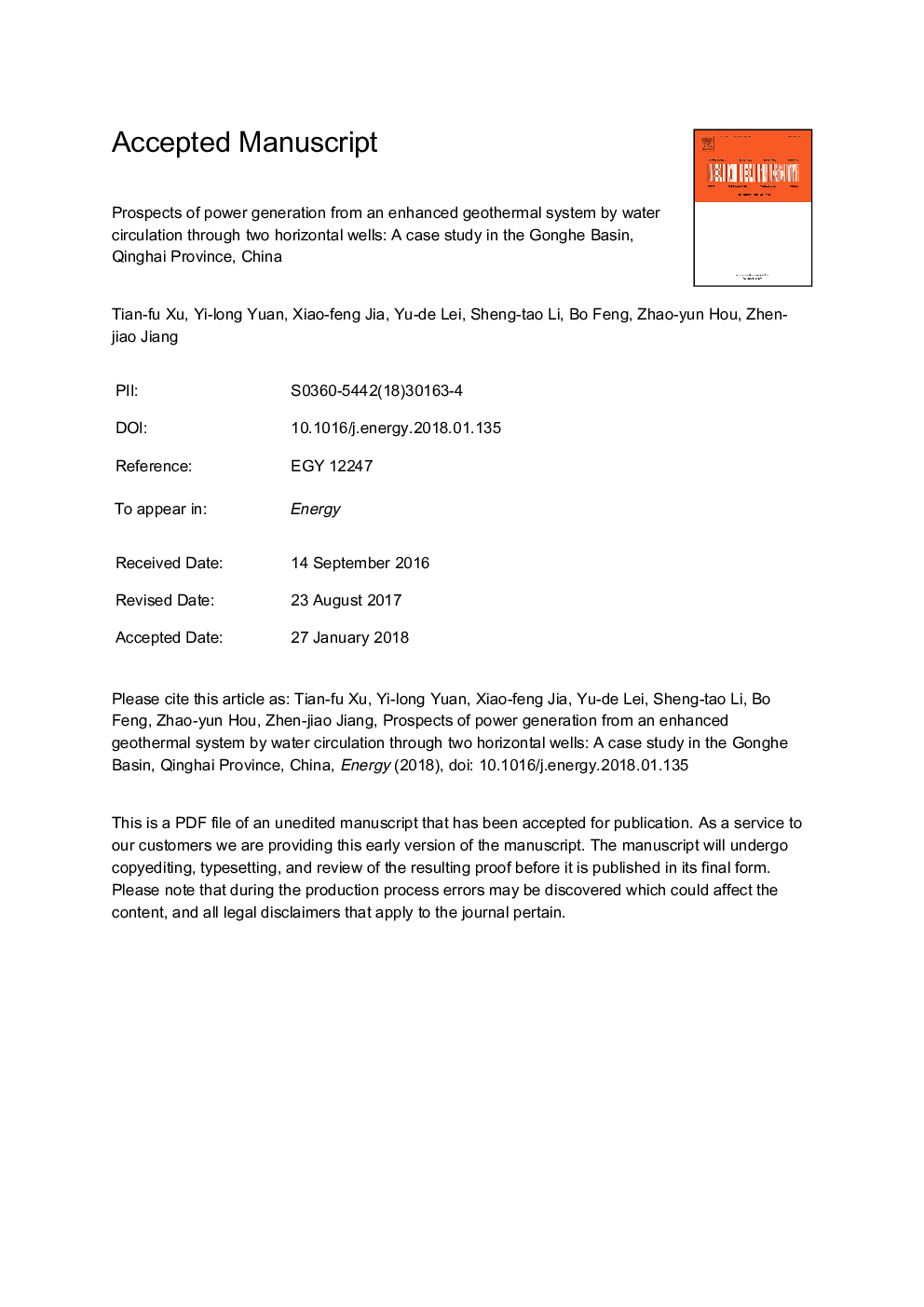| Article ID | Journal | Published Year | Pages | File Type |
|---|---|---|---|---|
| 8071988 | Energy | 2018 | 41 Pages |
Abstract
This study numerically investigates the power generation potential from a fractured geothermal reservoir at Qiabuqia geothermal area in the Gonghe Basin, Northwestern China, by water circulation through two horizontal wells. In the numerical model, the non-equilibrium heat exchange between fluid in fractures and rock matrix are considered to improve the simulation accuracy of heat and fluid transport in the subsurface. It is evaluated that in a reservoir at depths between 2700â¯m and 3200â¯m and initial temperature of 180â¯Â°C, the production temperature can maintain at 180â¯Â°C for 8.6 years and a temperature drops by 7.3% in 30 years. The production rate can maintain at 40â¯kg/s. The exergy analysis showed that the designed geothermal system could yield an electric power of 3.05-3.59â¯MW, with the flow impedance of 0.137-0.156 MPa/(kg/s) and energy efficiency of 31.0-62.4 over a 30-year period. The operation of such a system could reduce the total greenhouse gas (GHG) emissions by 0.27-0.92â¯Mt when compared to a fossil fuel plant. The sensitivity analysis indicates that the electric power mainly depends on fracture spacing and injection temperature, while the flow impedance and energy efficiency are controlled by fracture permeability.
Related Topics
Physical Sciences and Engineering
Energy
Energy (General)
Authors
Tianfu Xu, Yilong Yuan, Xiaofeng Jia, Yude Lei, Shengtao Li, Bo Feng, Zhaoyun Hou, Zhenjiao Jiang,
